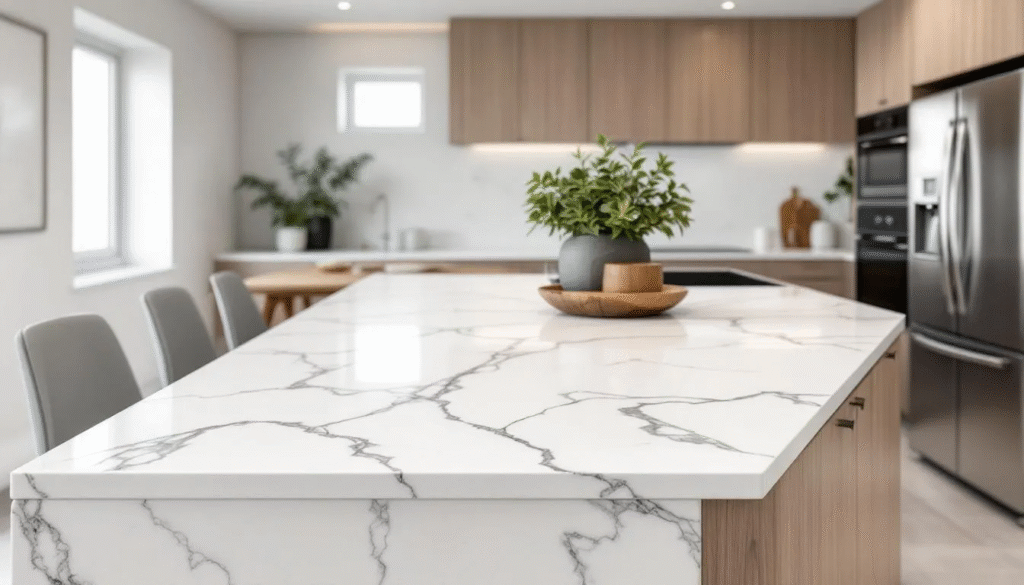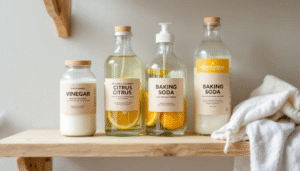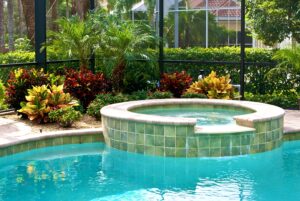
Your Naples home is more than just a place to live; it’s a statement of quality and a significant investment. The cool, elegant sweep of a marble countertop, the rich, warm gleam of hardwood floors, the sleek finish of high-end stainless steel—these are the materials that elevate a house to a luxury home. They are chosen for their beauty, durability, and timeless appeal.
But here is a truth that every discerning homeowner must understand: these beautiful surfaces are delicate. Their longevity is not guaranteed. The very cleaning products and techniques that work for standard surfaces can cause irreversible damage—etching, scratching, staining, and dulling—to your valuable investment.
Too often, well-intentioned cleaning efforts result in costly harm. At Magnolia Cleaning SWFL, our philosophy is built on protection as much as presentation. We believe that understanding how to care for these materials is the most critical aspect of home maintenance. That’s why we’re pulling back the curtain on the five most common and damaging mistakes we see when cleaning luxury surfaces, and providing the professional-grade advice you need to care for your home correctly.
Before You Clean: A Primer on Cleaning Luxury Surfaces in Your Home

To clean effectively, you must first understand the nature of what you’re cleaning. Different materials have vastly different properties.
- Natural Stone (Marble, Granite, Travertine): The most important concept here is porosity and pH sensitivity. Natural stone has tiny pores that can absorb liquids, leading to stains. Furthermore, stones like marble, travertine, and limestone are calcite-based, meaning they are highly reactive to acids. Even a drop of lemon juice can “etch” the surface, leaving a dull, permanent mark. Granite, being silicate-based, is much harder and more resistant to acid, but it is still porous and requires proper sealing to prevent stains. Daily use can lead to wear on natural stone surfaces, so regular maintenance is essential to minimize this and preserve their beauty.
- Hardwood Floors: With wood, it’s all about the finish. Most modern floors in Naples luxury homes have a durable polyurethane finish that sits on top of the wood. Luxury flooring options, such as luxury vinyl flooring, are also popular for their resilience, water resistance, and easy maintenance, but they require their own specific care routines. Older or custom floors might have a softer oil or wax finish that soaks into the wood. The cleaning method for a surface-level polyurethane finish is very different from that for a penetrating oil finish. And in the humid Southwest Florida climate, wood’s relationship with moisture is always a primary concern.
- High-End Appliances (Stainless Steel): The challenge with stainless steel is its “grain” and susceptibility to fine scratches. Abrasive cleaners or cloths can permanently mar its sleek, uniform appearance.
- Large Glass Surfaces: From panoramic windows to glass shower doors, the main enemies are scratches and mineral deposits from hard water, a common issue in Florida, which can leave stubborn, cloudy spots.
Proper care for all luxury surfaces is crucial to preserve their appearance and durability, as well as to prevent unnecessary wear from daily use and improper cleaning methods.
With that foundation, let’s explore the mistakes to avoid.
Assessing Your Home’s Surfaces: Know What You’re Working With
Before you dive into cleaning, take a moment to assess the unique surfaces throughout your home. Each material—whether it’s marble countertops, hardwood floors, or high-end materials like custom tile—demands a specific approach to cleaning and maintenance. Sensitive surfaces, such as marble, require gentle cleaning products and a soft cloth to prevent scratches and preserve their natural beauty. In contrast, high traffic areas like entryways and hallways may accumulate more dirt and debris, calling for frequent cleaning with high quality cleaning tools designed to remove dust without causing damage.
Understanding the needs of each surface allows you to create a cleaning routine that not only maintains but enhances the elegance of your home. For example, using the right tools—like soft bristle brushes for delicate finishes or specialized cleaning products for luxury materials—can make all the difference in preventing scratches and extending the life of your investment. By tailoring your approach to each area, you ensure that every surface, from marble countertops to hardwood floors, remains as stunning as the day it was installed.
Mistake #1: Using a One-Size-Fits-All, All-Purpose Cleaner
This is by far the most common and destructive error. Grabbing that convenient spray bottle of all-purpose cleaner might seem efficient, but it’s a recipe for disaster on the wrong surface.
The Problem: Most standard all-purpose cleaners are either highly acidic or highly alkaline to be effective at breaking down grime. The label may say “cleans everything,” but the chemistry tells a different story. An acidic cleaner—including homemade solutions with vinegar or lemon juice—will chemically react with the calcium carbonate in marble, travertine, and limestone. This reaction, called etching, literally dissolves a microscopic layer of the stone, destroying the polish and leaving a dull, rough spot that cannot be wiped away.
The Solution: Respect the pH Scale. For all-natural stone, you must use a pH-neutral cleaner. Look for products specifically formulated for natural stone. These cleaners are designed to lift dirt and grime without reacting with the stone’s delicate composition. For the best results and to elevate your cleaning routine, consider using luxury cleaning products that are specially formulated for high-end surfaces—these not only protect delicate materials but also provide a superior, sophisticated finish.
- For Marble & Travertine: Strictly pH-neutral. No exceptions.
- For Granite: While more durable, it’s still best practice to use a pH-neutral cleaner to protect the sealant and prevent any potential issues.
- DIY Option: In a pinch, a few drops of pH-neutral dish soap (like a clear, basic formula) in a bucket of warm water can work. However, be sure to rinse the surface thoroughly with plain water afterward to prevent soap film buildup.
- What Professionals Do: A professional service like Magnolia Cleaning arrives with a curated toolkit of specialized, pH-balanced products for every type of surface in your home, eliminating the guesswork and the risk.
Mistake #2: Treating All Wood Floors the Same (Using Too Much Water)
Water is the lifeblood of our beautiful Naples landscape, but it is the number one enemy of hardwood floors. The “sloshing a wet mop around” technique seen in commercials is a catastrophic method for wood.
The Problem: In the humidity of Southwest Florida, wood already has a high moisture content. When you introduce excess water during cleaning, it seeps into the seams between boards and penetrates any microscopic cracks in the finish. This leads to warping, cupping (where the edges of the boards raise), and discoloration. For oil-finished floors, water can cause permanent staining and graying of the wood itself.
The Solution: The “Barely Damp” Method and Finish-Specific Care. The goal is to clean the finish, not soak the wood.
- For Polyurethane-Finished Floors: The key is a damp microfiber mop. Lightly mist a small section of the floor with a pH-neutral hardwood floor cleaner (we recommend Bona or similar professional-grade products) and immediately mop with a clean, dry microfiber pad. The floor should be dry to the touch within a minute. Never let water puddle.
- For Oiled or Waxed Floors: These require even more specialized care. They should almost never be cleaned with water. Instead, use cleaners and revival products specifically designed for that type of finish. Consult a professional to be certain of your floor’s needs.
- What Professionals Do: Our teams use professional-grade flat-head mops with multiple, interchangeable microfiber pads. We use a minimal amount of the correct, high-quality cleaning solution to protect the integrity of the wood and its finish, ensuring a streak-free shine without the risk of water damage.
Using these proper cleaning methods and finish-specific care will help extend the lifespan and appearance of your luxury wood floors.
Mistake #3: Scrubbing with Abrasive Tools and Powders
When faced with a tough, stuck-on spot, it’s tempting to reach for a scouring powder or the green side of a kitchen sponge. On luxury surfaces, this is like using sandpaper.
The Problem: Polished stone, stainless steel, and glass get their beauty from a perfectly smooth, reflective surface. Abrasive tools and powders create thousands of tiny scratches. While a single scratch may be invisible, thousands of them diffuse light, making the surface look dull, hazy, and old. This is particularly noticeable on stainless steel appliances and dark-colored stone countertops.
The Solution: Lift, Don’t Scour. Patience and the right tools are key.
- Embrace Microfiber: High-quality microfiber cloths are your most important tool. Their microscopic fibers are designed to grab and lift particles of dirt and grime, rather than just pushing them around. They clean effectively without scratching. Use separate cloths for dusting, wiping, and polishing. For small stains or spills, spot cleaning with a microfiber cloth or mop is recommended to avoid unnecessary abrasion and protect luxury vinyl floors.
- For Stuck-On Messes: On stone or glass, let a wet, soapy cloth sit on the spot for a few minutes to soften it. Then, use a plastic scraper or the edge of an old credit card to gently lift it. For stainless steel, a specialized paste and a microfiber cloth, wiped in the direction of the grain, is the safest bet.
- What Professionals Do: We understand that a gentle approach is often the most effective. Our teams are equipped with a range of non-abrasive tools and have the training and patience to safely remove stubborn spots without ever resorting to damaging, abrasive methods.
Mistake #4: Ignoring Spills, Especially on Porous Stone
A casual drip of red wine or a splash of lemon juice during cocktail hour can seem harmless, but on a porous stone countertop, it’s a race against time.
The Problem: Porous stones like marble, limestone, and even unsealed granite act like a sponge. Acidic liquids (wine, coffee, juice, soda) will begin to etch the surface on contact. Pigmented liquids will seep into the pores, causing a deep stain that can be nearly impossible to remove with surface-level cleaning.
The Solution: Blot Immediately and Know Your Limits. Speed is everything.
- Blot, Don’t Wipe: Wiping a spill spreads it over a larger area. Instead, immediately blot the spill with a clean, absorbent paper towel or cloth to draw the liquid up and out of the stone.
- Rinse Gently: After blotting, rinse the area with a little water and wipe dry with a soft cloth.
- For Stains: For an organic stain that has already set, you can try creating a poultice—a paste of baking soda and water applied to the stain, covered in plastic wrap, and left overnight. However, this is an advanced technique. For deep or oil-based stains, you risk making it worse.
- What Professionals Do: A professional cleaning service not only cleans but can often assess the condition of your stone’s sealant. For existing stains, they can identify the type of stain and use professional-grade poultices and techniques that are far more effective and safer than DIY methods.
Mistake #5: Neglecting Professional Sealing and Maintenance
The single most important protective measure for any porous surface is its sealant. But sealant is not permanent.
The Problem: The invisible, protective barrier created by a sealant wears down over time with regular use and cleaning. Once the sealant is compromised, your stone is left vulnerable to the etching and staining described in Mistake #4. Grout is also highly porous and will absorb dirt and spills if not properly sealed, leading to discoloration.
The Solution: Test, Seal, and Maintain. Think of sealant as the sunscreen for your countertops.
- The Water Test: You can easily check your sealant’s integrity. Drip a small puddle of water onto the surface in a high-use area. If the water beads up tightly, your sealant is strong. If the water starts to darken the stone or soak in after a few minutes, it’s time to reseal.
- Sealing Schedule: The frequency of sealing depends on the stone and the amount of use it gets. A marble kitchen countertop might need professional sealing every year, while a granite guest bathroom vanity might go for 3-5 years.
- What Professionals Do: This is one job almost always best left to the experts. Professional sealing involves thoroughly cleaning and preparing the stone, applying the correct type of high-quality sealant evenly, and buffing away the excess to ensure a flawless, protective finish. It’s a cornerstone of long-term luxury surface care.
Creating a Cleaning Routine: Consistency is Key
A well-structured cleaning routine is the foundation of a beautiful, well-maintained home. Consistency is essential for keeping dirt, dust, and stains at bay, especially in high traffic areas like living rooms, bathrooms, and kitchens. Start by mapping out a cleaning schedule that includes daily, weekly, and monthly tasks—such as dusting with microfiber cloths, vacuuming, and deep cleaning surfaces.
Use high-quality cleaning products, soft bristle brushes, and microfiber cloths to clean without causing damage. Address spills as soon as they happen to prevent water spots and stubborn stains from setting in. By sticking to a regular cleaning routine, you’ll not only maintain the elegance and beauty of your home but also make each cleaning session more efficient and less overwhelming. Remember, a little attention each day goes a long way in preserving the pristine condition of your most cherished spaces.
Organizing and Decluttering: The Secret to Easier Cleaning
A clutter-free home is much easier to clean and maintain. Start by focusing on high traffic areas and surfaces that tend to collect items, such as countertops and floors. Remove unnecessary objects and sort them into categories—donations, recycling, or trash—to keep your space organized. Use storage solutions like bins and labels to keep everyday items out of sight and reduce the accumulation of dirt and dust.
Regular decluttering not only streamlines your cleaning process but also helps prevent stains and water spots from forming on exposed surfaces. Implementing protective measures, such as coasters and placemats, can further safeguard your floors and countertops from accidental spills. By making organization an essential part of your routine, you’ll find that maintaining a clean, elegant home becomes much more manageable.
Windows and Lighting: Let the Sunshine In
Clean, sparkling windows and gleaming lighting fixtures can transform the atmosphere of any room, making it feel brighter and more inviting. To achieve a streak free finish, use a high-quality, streak free glass cleaner and a microfiber cloth to clean windows and mirrors. Avoid harsh chemicals that can leave residue or streaks behind. For lighting fixtures, gently wipe with a soft cloth and a mild cleaner to remove dust and dirt without damaging delicate finishes.
Consider using HEPA filters in your home to help remove dust and allergens from the air, keeping your glass and metal fixtures cleaner for longer. Don’t forget to polish metal fixtures regularly to maintain their shine and elegance. With regular cleaning and the right tools, you’ll let the sunshine in and create a space that truly sparkles.
Bathroom and Kitchen Cleaning: Tackling the Toughest Spaces
Bathrooms and kitchens are the workhorses of any home, often facing the toughest cleaning challenges. To keep these spaces looking their best, use high-quality cleaning products and microfiber cloths to clean surfaces thoroughly without leaving residue. For stubborn stains, reach for a gentle cleaner and a soft bristle brush to carefully scrub the affected area, ensuring you don’t cause scratches or damage.
Routine cleaning is essential—wipe down sinks, counters, and appliances with a soft cloth, and use a pH neutral cleaner to protect sensitive surfaces. Address spills immediately to prevent water spots and stains from setting in. Deep cleaning these areas on a regular basis will help maintain their beauty and elegance, ensuring your bathrooms and kitchens remain inviting and pristine. By following these tips and using the right tools, you’ll tackle even the toughest spaces with confidence and care.
The Magnolia Cleaning Approach: Protecting Your Naples Investment
At Magnolia Cleaning SWFL, we see ourselves as caretakers of your beautiful home. Our services are specifically designed for luxury houses and upscale residences, ensuring that every detail of your sophisticated environment is maintained to the highest standard. Our teams are rigorously trained to identify different luxury surfaces and understand their unique needs. We don’t believe in “one-size-fits-all.” Our approach is built on:
- Specialized Training: We educate our team on the chemistry of cleaning to prevent damage.
- Curated Products: We use a full range of pH-neutral, professional-grade products designed for each specific surface.
- Meticulous Methods: From our top-to-bottom system to our gentle, non-abrasive techniques, every step is designed to protect and enhance.
Our comprehensive approach also includes the care and cleaning of fine upholstery and curtains, helping to maintain the overall elegance and pristine condition of your home.
We provide a level of care that goes beyond a surface-level clean, offering the peace of mind that comes from knowing your significant investment is in expert hands.
Frequently Asked Questions (Q&A)
Q1: How can I easily tell if my stone countertop is sealed?
Perform the “water test.” Place a few drops of water on the surface. If it beads up tightly, the seal is intact. If the water spreads out and starts to darken the stone within a few minutes, it’s absorbing the water and it’s time to reseal.
Q2: I think my marble countertop is already etched from using the wrong cleaner. Can it be repaired?
Yes, in most cases. Etching is surface-level damage. It can be removed by a professional stone restoration expert through a process called honing (which uses fine abrasives to smooth the surface) and re-polishing. It is not a DIY job.
Q3: Is a solution of vinegar and water ever safe to use?
Vinegar is a fantastic natural disinfectant, but it is highly acidic. It is safe for cleaning glass (when diluted), the inside of a dishwasher, or for descaling a coffee maker. It should NEVER be used on natural stone like marble, limestone, or travertine, and should be used with extreme caution on grout as it can eat away at it over time.
Q4: What is the single best everyday cleaner I can buy for my sealed hardwood floors?
For homeowners, we highly recommend a reputable, pH-neutral hardwood floor cleaner like those made by Bona. They are readily available, effective, and specifically formulated not to damage polyurethane finishes. Always use it with a microfiber mop, not a traditional string mop.
Q5: Why should I trust Magnolia Cleaning with my expensive surfaces over another company?
Trust is built on expertise and care. As a woman-owned business, we have a culture of meticulous attention to detail. Every member of our team is not only vetted and insured but also receives specific training on the care of luxury surfaces commonly found in Naples homes. We don’t just clean—we protect, preserve, and enhance your investment.
Q6: How should I deep clean carpets and rugs in a luxury home?
Regularly deep clean carpets and rugs to preserve their appearance, cleanliness, and luxurious feel. Deep cleaning helps remove embedded dirt, dust, and allergens that routine vacuuming can miss, maintaining the vibrant look and detailed patterns of high-end carpets and rugs. For best results, use professional deep cleaning services or high-quality equipment designed for luxury flooring.




